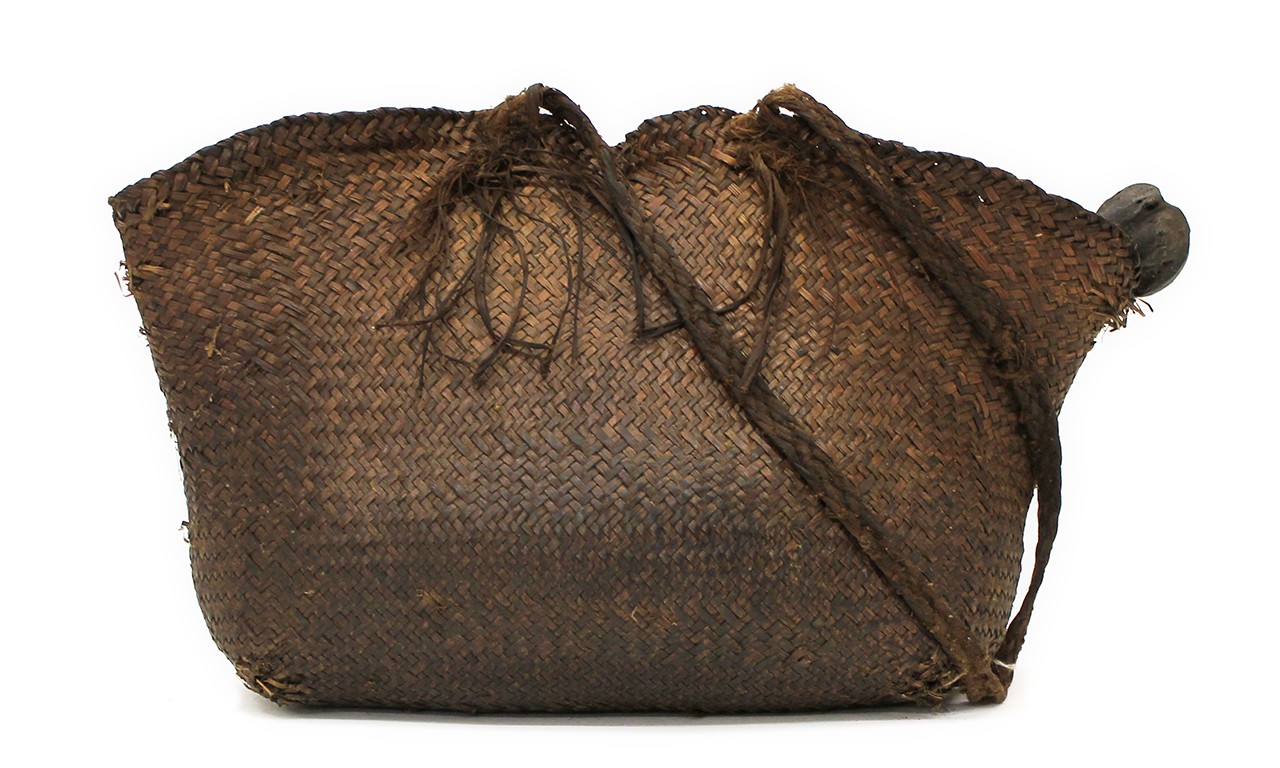 |
Ritual Magic Bag with Pouch, mid 20th Century
Papua New Guinea, Melanesia
Palm fibers, bone, wood, beads, feathers and cowrie shell; 11 1/4 × 17 1/2 × 4 in.
2017.10.66.1-.3
Anonymous Gift |
Absolutely Enchanting
Magic is something that almost everyone grows up with in one form or another: in simplest terms it is the attractive notion that individuals have the power to influence things that would otherwise have been out of their hands through the employ of the supernatural. High rates of disease, crop shortages, conflicts over land, and more have made Papua New Guinea a lasting hub for magic, where it is regularly used to exercise control over an all-too-chaotic world. New Guinea’s magic has developed independently over thousands of generations and though generally founded in animism and ancestor worship it remains highly unique. This post surveys the magic of Papua New Guinea and a selection of five bags that would once have been used to aid in its practice.
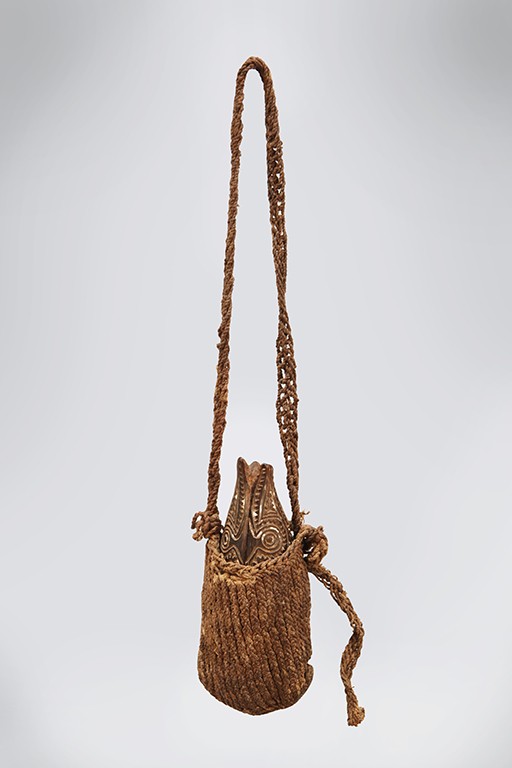 |
Charm (Marupai) in Bag, early 20th century
Elema culture; Kerema area, Gulf Province, Papua New Guinea, New Guinea, Melanesia
Dwarf coconut, white lime and plant fiber; 4 × 1 1/4 × 1 in.
2011.14.2a,b
Bowers Museum Purchase |
Open Enrollment
It is first worth discussing some of the varieties of magic that are found throughout New Guinea. Unfortunately, Western lexicon in general falls short when discussing specific terms. Loosely defined words like sorcerer and shaman evoke images in the western mind of powerful warlocks bending the souls of the dead to their will or American Indian mystics walking on planes other than our own, but in the context of New Guinea they can be misleading or entirely inaccurate. A significant portion of magic in Papua New Guinea falls under the category of productive magic: this includes but is not limited to summoning rain or sunlight; plumping pigs as well tuberous foods like yams and taro; and even making women more receptive to marriage. Sorcery was traditionally widely practiced as well and falls under the categories of several vernacular terms: sanguma, poisen, poisen man, poisen meri, puripuri, pawa, blak pawa, kawawar, marila, and tambaran(man), almost all of which find a shared purpose in allowing one to wound or kill their enemies.
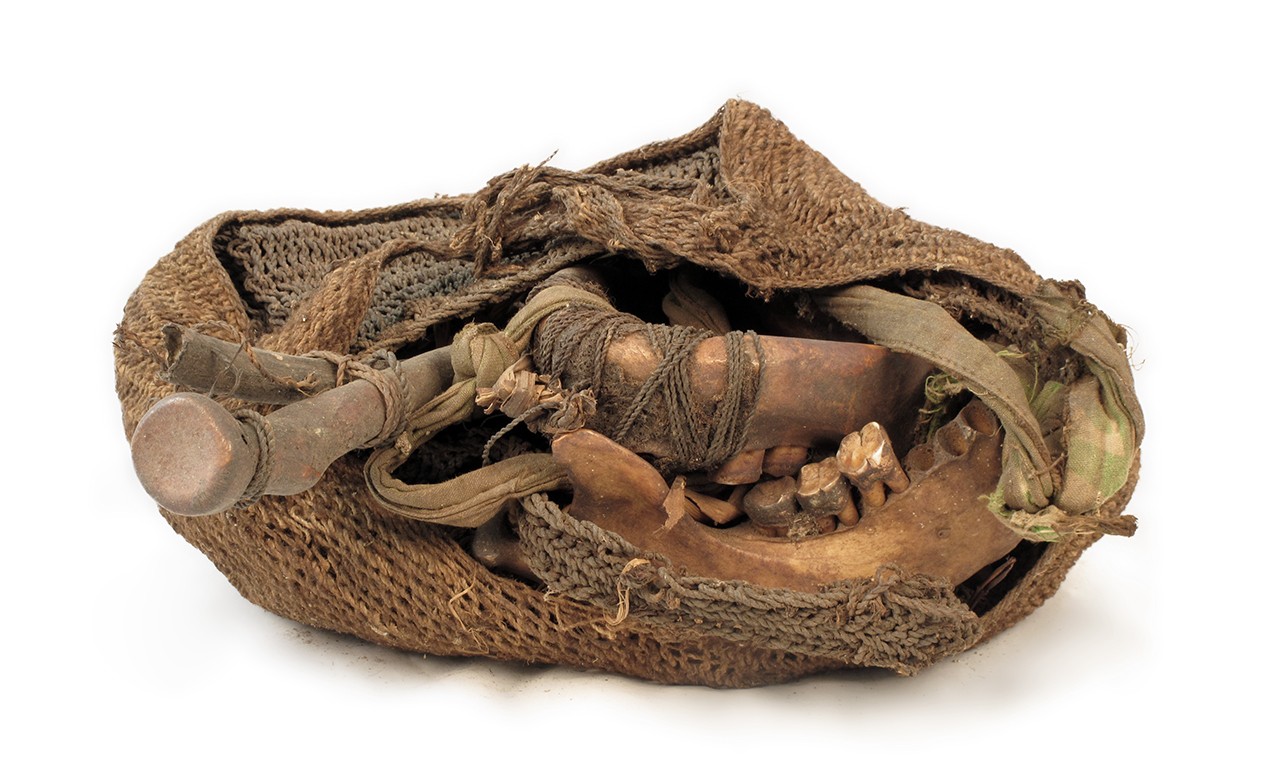 |
Magic Bag with Human Jawbone, mid 20th Century
Kupien Village, Upper Sepik, Papua New Guinea
Cloth and bone; 9 1/2 × 9 in.
2002.65.3
Jordan Community Trust Purchase |
Bag of Holding
Bags such as those featured in this post are used by men who practice magic—sorcerers, healers, and growers alike. They hold a wide range of carved talismans, stones, bones, cloth, and smaller plant parts like sections of bark and mosses. These tools are used to connect individuals practicing magic to helpful entities such as ancestors and good spirits, and the sources of any problems, diseases, or evil spirits within the village. Despite a decline in the practice of traditional magic during the height of missionary presence in the country in the latter half of the 20th century, many traditional beliefs were preserved in secret or practiced alongside Christianity and have survived to this day.
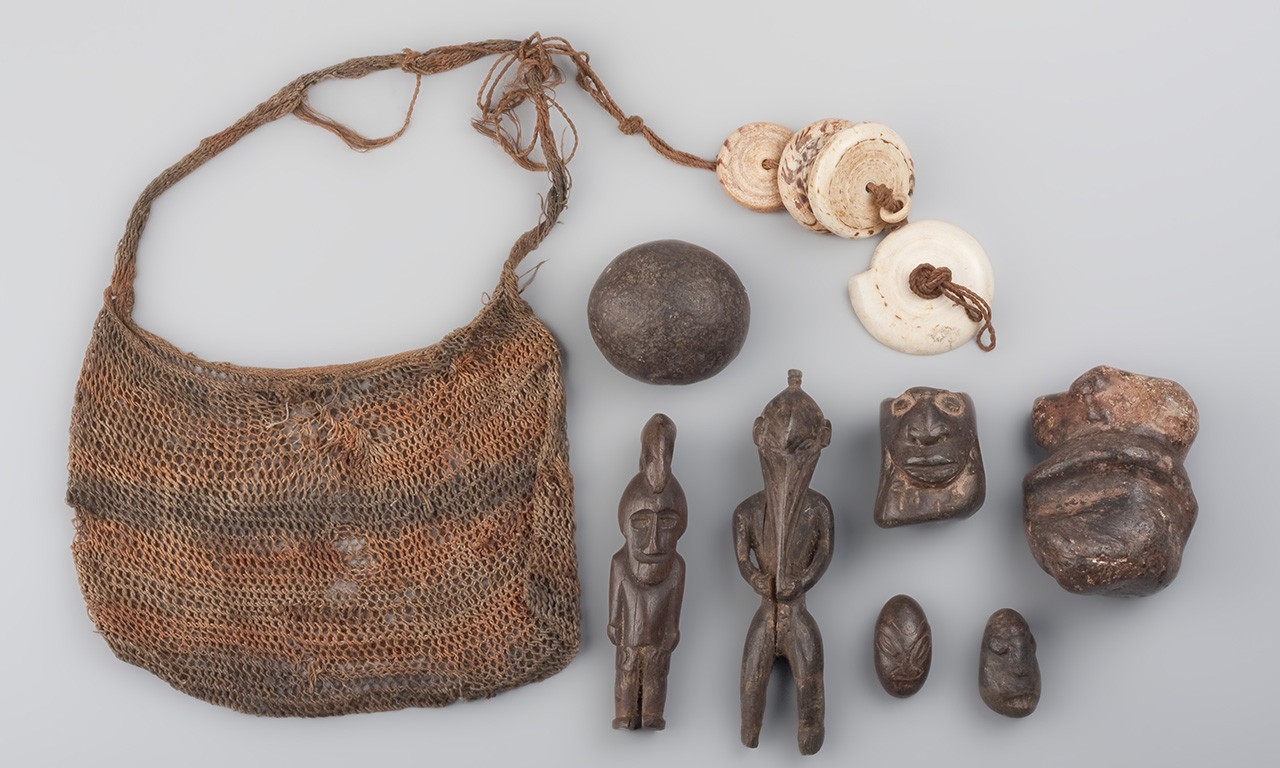 |
Ritual Magic Bag with Amulets, 20th Century
Shagur village, Kairiru Island, Sepik Coast, East Sepik Province, Papua New Guinea, Melanesia
Fiber, shell, wood and stone; Various Dimensions
2001.12.1a-h
Gift of Bowers Museum Collectors Council |
Tools of the Trade
The contents of the above bag from Shagur Village on the north coast of Kairuru Island show just how many tools are employed by practitioners of magic. There are seven components apart from the bag, two of which are kaikrauap, male-female figure pairs that are generally used in taro and other crop fertility rituals, another two of which are small helpers carved from stone, one seems to speak to one of the island’s myths involving a snake, one appears to be a small mortar for mixing betel nut and wild ginger—it is common practice to spit chewed ginger toward the object of a spell—and finally a stone which has elsewhere been seen to be associated with taro fertility. It seems likely that this bag would have predominantly been used to aid in planting and cultivating the island’s staple tuber. Another interesting note about this bag is that most of the figures and carvings have unique names that have been given to them. The two wooden icons, for instance, are named Chemgau and Kutnul. Complicated rules and hereditary rights govern the use of many of these objects. A practitioner might not be qualified to make magic objects and a maker of magic objects might not necessarily be qualified to use them.
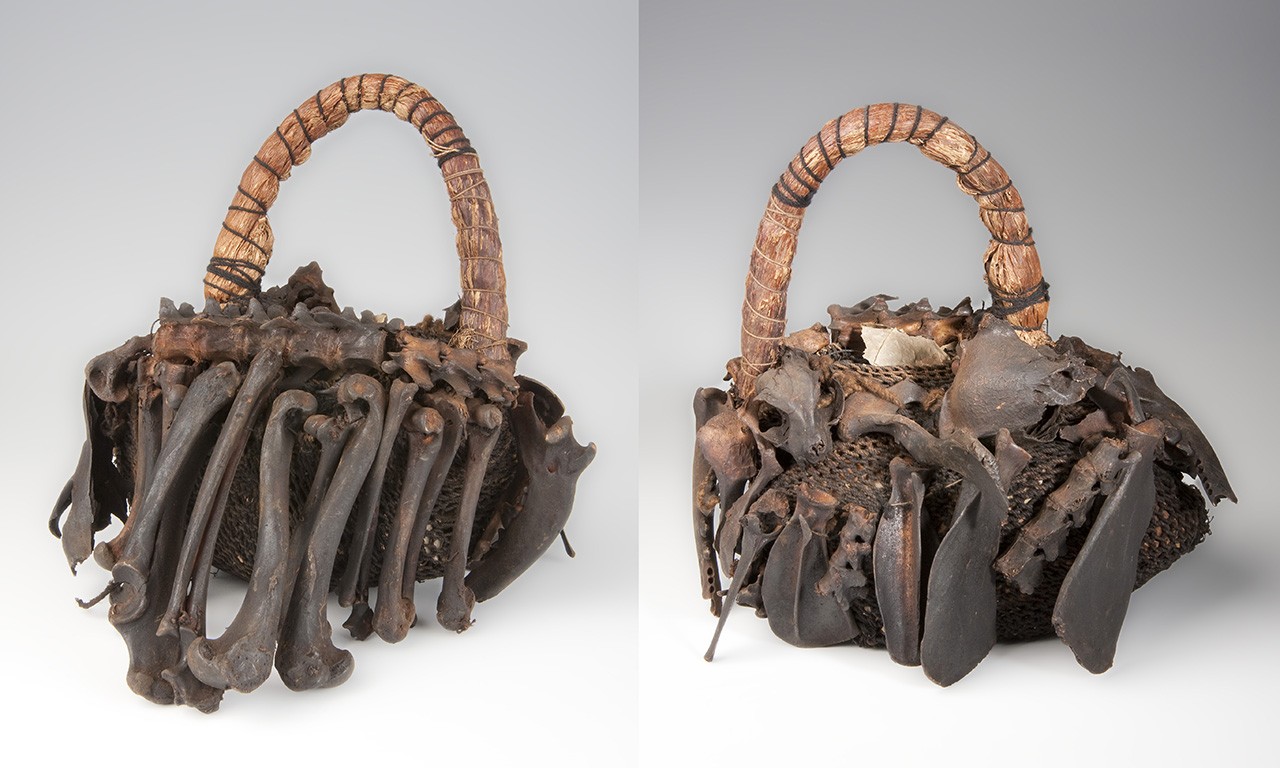 |
Ritual Magic Bag, 20th Century
Central Highlands area, Chimbu Province, Papua New Guinea, Melanesia
Fiber, various animal bones, leaves and stone; 13 7/8 × 11 1/2 × 8 7/8 in.
2003.43.17
Anonymous Gift |
Contemporary Casting
As previously noted, magic is still very much alive in New Guinea, and it regularly presents difficulties for a country seeking to modernize. In 1971 Papua New Guinea passed the infamous Sorcery Act, which legitimized magic as a basis for court cases. It was since repealed in 2013, but it is estimated that there are as many as a thousand instances of witch hunts across New Guinea every year. Individuals fall ill from any manner of affliction and are quick to blame vulnerable women, and to a lesser extent men, who are supposedly under the influence of evil parasitic spirits. Many such allegations end with the accused being assaulted or killed in horrific ways not so dissimilar to methods used in Salem around the end of the 17th century. Secular opponents of these practices propone education as the best tool for dispelling dangerous superstitions but doing so without alienating people for beliefs that their ancestors have held for thousands of years is no easy feat.
Text and images may be under copyright. Please contact Collection Department for permission to use. References are available on request. Information subject to change upon further research.






Comments